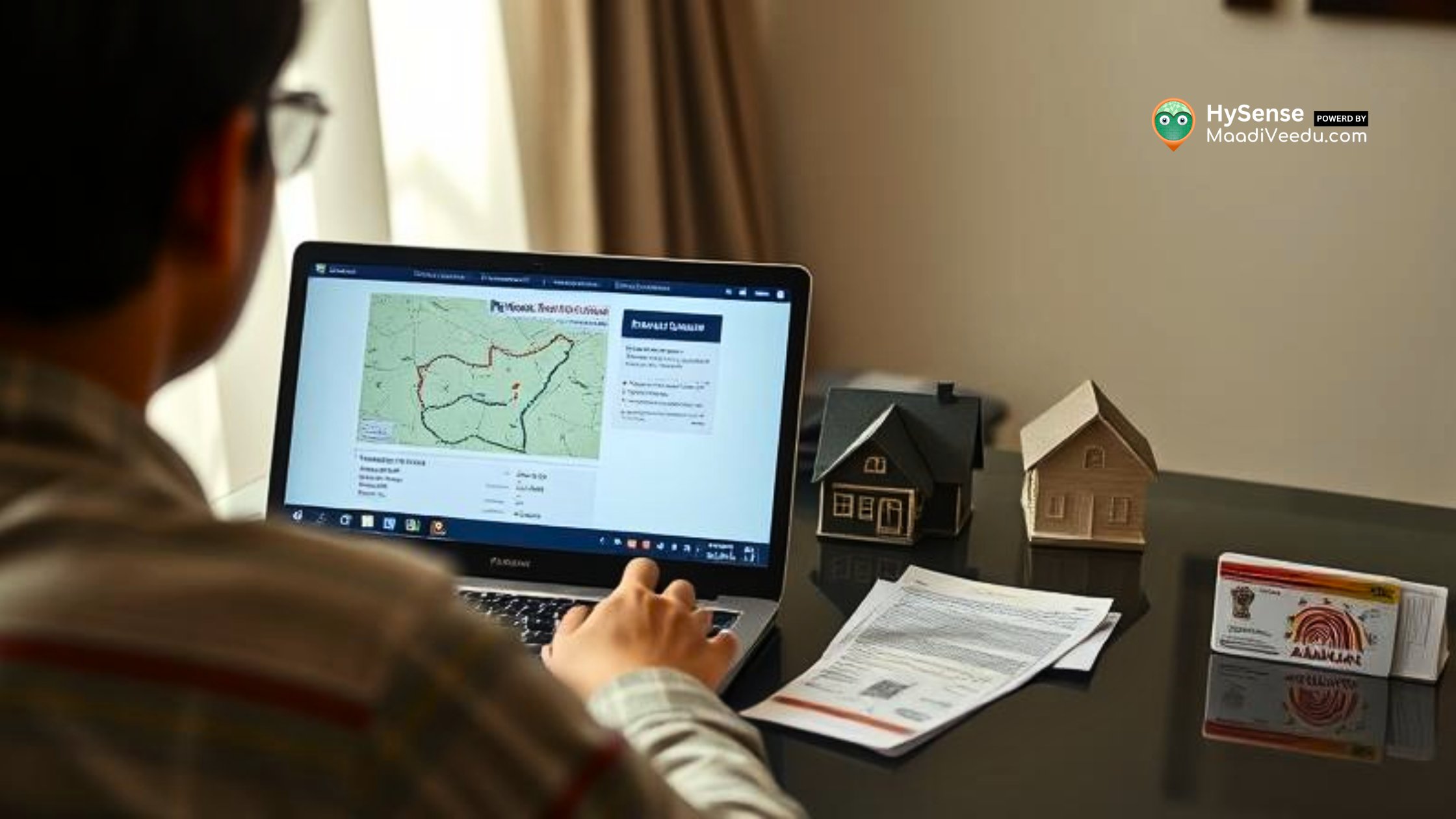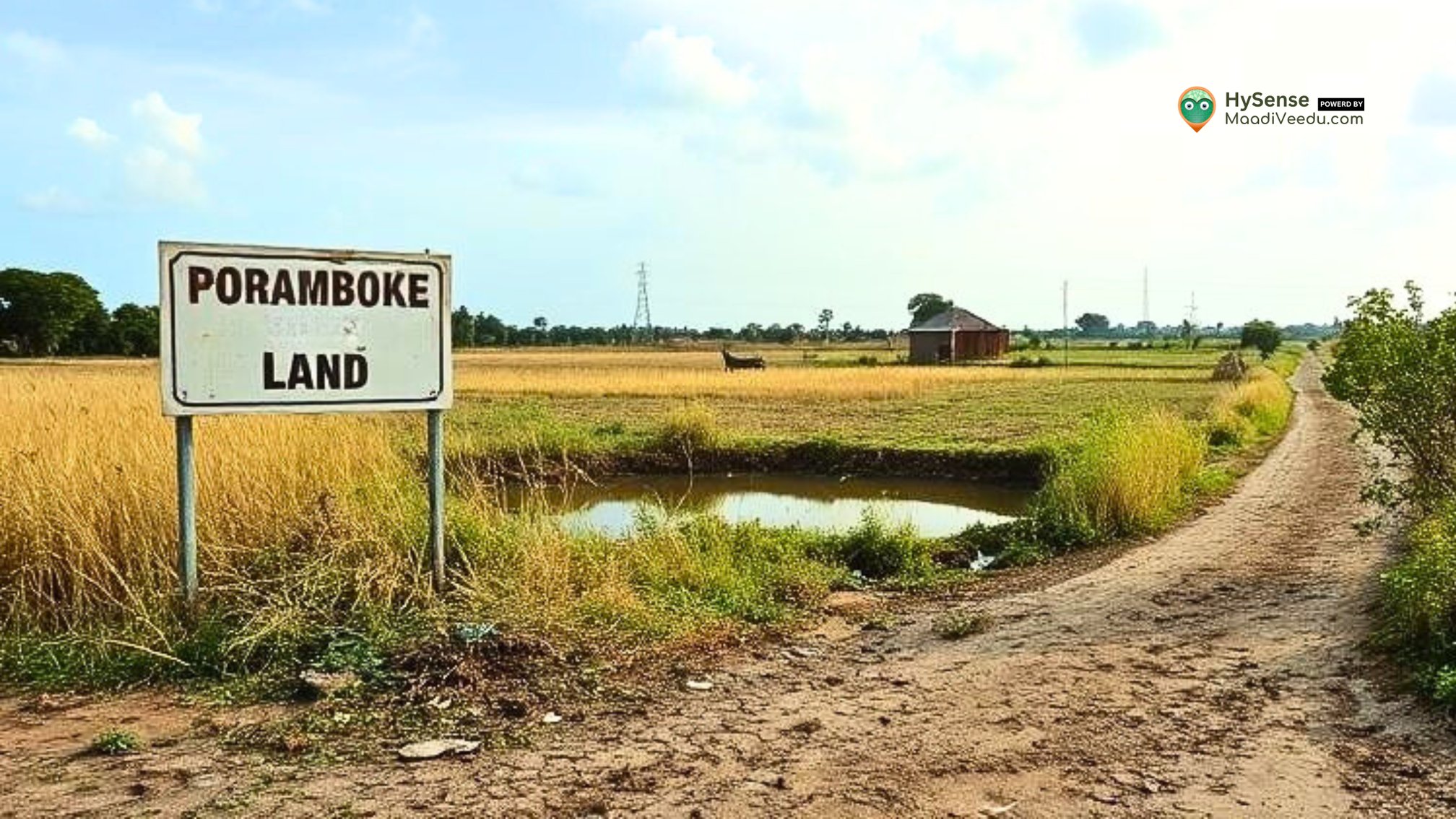Agricultural Land Conversion to Non-Agricultural Land - A Simple & Clear Guide for 2025
Learn the simple steps to convert agricultural land to non-agricultural land. Get clear, easy-to-follow guidance for your property transformation journey
Table of Contents
A Surprising Truth:
Did you know that in many fast-growing towns, more than 30% of agricultural land is being converted for housing and commercial projects every year? With urban expansion accelerating, the land you own today for farming might soon become a sought-after location for development.
But Wait – Is It That Simple to Convert It?
What if you bought a piece of land years ago for farming, but now it’s ideal for a small factory or residential layout? Can you just start construction?
No – not legally. There's a process, and this blog simplifies it for you.
Real Story You May Relate To:
Imagine someone owning a beautiful piece of farmland on the edge of a town. Over time, the city grows, and suddenly, that land is in the perfect spot for a new school or shop. But the land is still marked agricultural. If the owner skips the legal process and builds on it – fines, demolition, and legal trouble follow. This guide helps you avoid that.
What You’ll Learn in This Blog
- What exactly is agricultural land
- Why and when landowners convert it
- Step-by-step legal process for conversion in 2025
- Key points, laws, and common issues to watch out for
Whether you're a landowner, buyer, or investor, this guide will give you clear insights and confidence in the conversion process.
What is Agricultural Land?
Agricultural land is land designated for farming—growing crops, vegetables, or raising livestock. Local laws protect such land from random or illegal usage, especially to maintain food production and environmental balance.
But when urban growth touches rural boundaries, many landowners start looking at converting this land to use it for homes, businesses, or industries.
Why Convert Agricultural Land?
People choose to convert farmland for different reasons:
- To build houses – Especially in urban or suburban areas where land for housing is in demand.
- To open shops or offices – Business zones often expand into former agricultural areas.
- For industrial development – Factories, warehouses, or parks may require large open lands.
- To support public infrastructure – Government may need land for roads, hospitals, or schools.
Not ready to convert yet? Make the most of your farmland – see top schemes offering money, benefits, and support in 2025.
Step-by-Step Process for Converting Agricultural Land in 2025
Let’s understand how you can legally convert your agricultural land to non-agricultural use:
Step 1: Understand Local Zoning Laws
Before you do anything, visit your local municipality or town planning office. They will tell you:
- If the area is eligible for non-agricultural use
- What types of conversions are permitted (residential, commercial, etc.)
Some zones are strictly agricultural, while others fall under mixed-use categories.
Need help with measurements? Use our Land Unit Converter Tool to easily compare acres, cents, sq. ft., and more during your land planning.
Step 2: Submit Your Application to Authorities
Once you confirm that conversion is allowed:
- Submit your request to the District Collector or Municipal Corporation
- Include the following documents:
- Ownership proof (e.g., title deed)
- A map with clear land boundaries
- Proposed usage (residential, commercial, etc.)
- No Objection Certificate (NOC) from local Panchayat or Municipality if required
Step 3: Pay the Required Conversion Fee
Your application won't be processed until you pay the conversion fee. This varies based on:
- Size of land
- Location and property value
- Type of proposed use
The fee covers inspection and administrative costs.
Step 4: Site Inspection by Officials
Authorities will:
- Inspect your land physically
- Check if it’s close to water bodies, forests, or protected areas
- Review how your plan fits into the city’s master plan
If the land poses any environmental or zoning concerns, they may reject or modify your request.
Step 5: Approval of Conversion
If everything checks out, the authority will issue an official conversion order. This document legally changes the land's classification from agricultural to non-agricultural.
Once you receive this, you can begin construction or development based on the approved purpose.
Step 6: Mutation of Land Records
After the order, visit your local revenue office to update land records. This process is called mutation.
Mutation ensures that:
- Land revenue records now reflect non-agricultural status
- Future buyers or authorities legally recognize your land’s new use
Important Points to Remember
✅ Zoning and Master Plans
- Always cross-check your area’s zoning classification
- Some lands cannot be converted due to environmental or urban restrictions
✅ Environmental Clearance
For large projects like malls or factories, environmental clearance is a must—especially if near rivers, forests, or wetlands.
✅ State-Specific Laws
Each state has its own rules. Some states have Agricultural Land Conversion Acts, which define:
- What lands can be converted
- Who gives approval
- What penalties apply for illegal use
Check with a local land lawyer or authority for clarity.
Common Issues and How to Handle Them
Final Thoughts
Converting agricultural land to non-agricultural land can unlock major value—but only if done legally.
Follow the rules, pay the required fees, and get approvals at every step. This protects you from legal action, penalties, or future disputes.
Whether you’re planning to build a small house, a business hub, or sell the land at a higher value, this conversion is the first legal step to take.
For more real estate tips, guides, and legal insights, stay updated with blog.maadiveedu.com
explore properties ready for residential, commercial, or farmland development, visit www.MaadiVeedu.com – find the right land for your dream today.
Frequently Asked Questions (FAQ)
1. Can I build a house directly on agricultural land?
No, you cannot build a house legally on agricultural land unless it is converted to non-agricultural use. Doing so without conversion can lead to legal trouble and penalties.
2. How long does it take to convert agricultural land to non-agricultural land?
The conversion process usually takes 30 to 90 days, depending on your state and how complete your application is. Delays may happen if documents are missing or authorities have a backlog.
3. What documents are required for land conversion?
You will generally need:
- Ownership proof (e.g., Patta or title deed)
- Land sketch or map with boundaries
- No Objection Certificate (NOC) from local bodies
- Application form and identity proof
- Any additional documents as per state rules
4. Is conversion needed for all types of construction?
Yes. Whether it's for residential, commercial, industrial, or institutional use—you must get legal conversion approval before starting any construction.
5. Who gives the final approval for conversion?
It is usually given by the District Collector, Tahsildar, or the local Municipal authority, depending on your location and state rules.
6. Do all states in the country follow the same conversion rules?
No. Each state has its own land laws and procedures for conversion. Some states even have special acts like the Agricultural Land Conversion Act. Always check with your local authority.
7. What is a Mutation after land conversion?
Mutation means updating the land records to reflect the new land use (non-agricultural). This is done at the local revenue office after conversion is approved.










